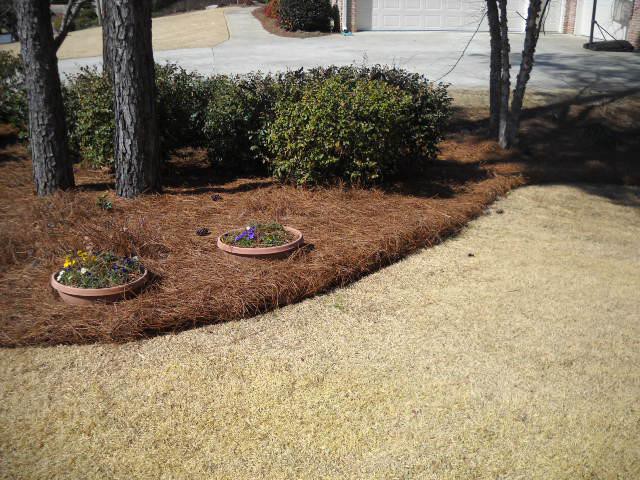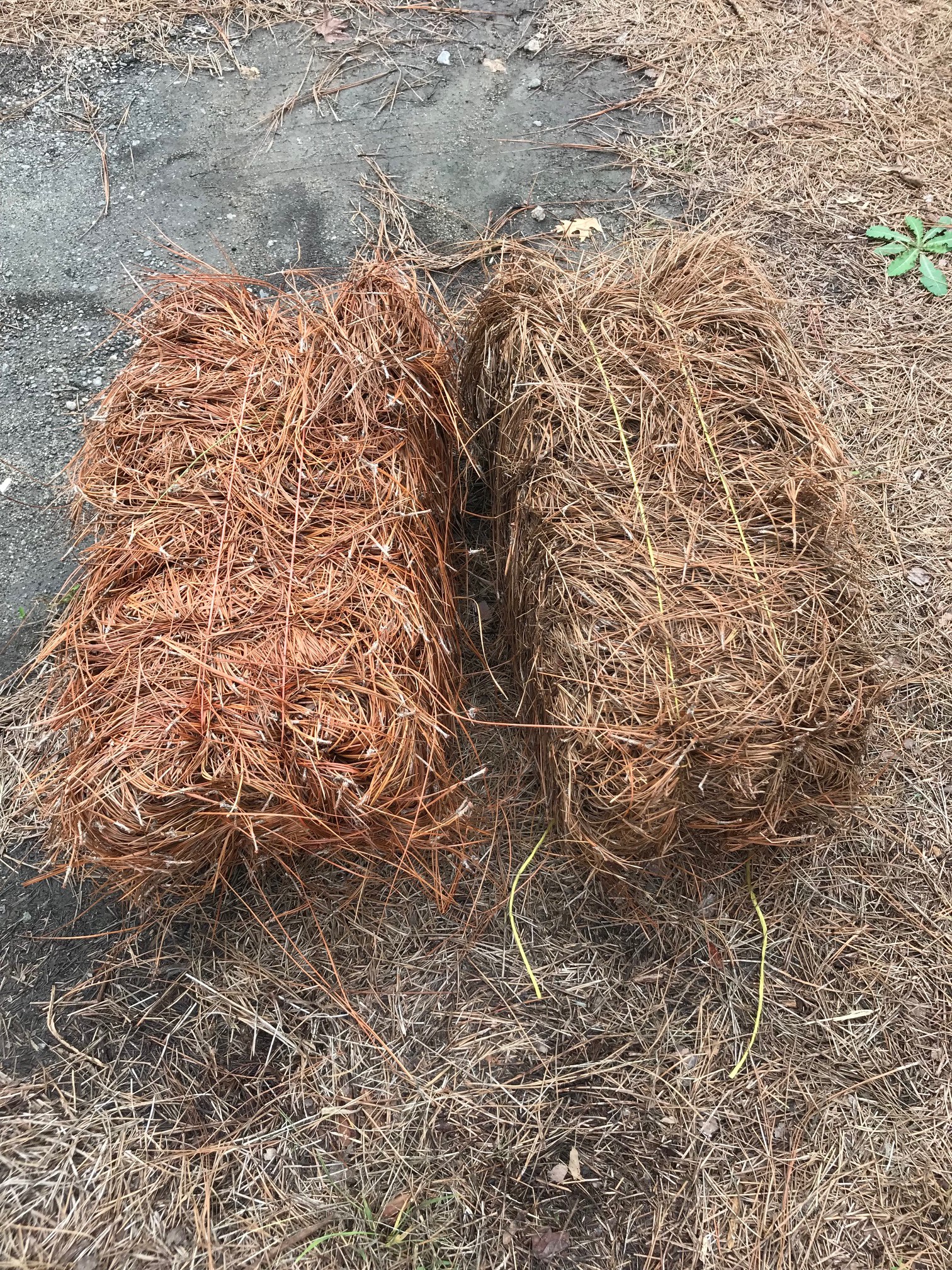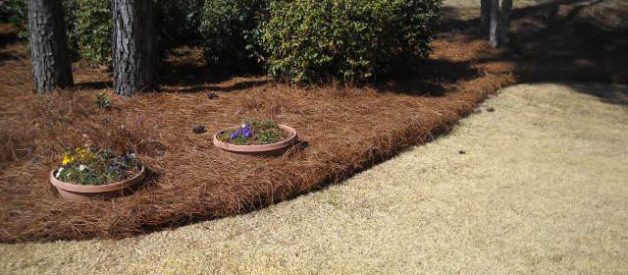by Scott Satterfield (for Four Seasons Pine Straw LLC, Acworth, GA)
As the owner of a company which provides pine straw for both residential and commercial users, I am often answering questions as to the nature of pine straw and its various uses. I have compiled some of these questions and my usual answers into this article, which I hope prospective pine straw users will find useful.
 Installed Southern Long Leaf pine straw with rolled edges
Installed Southern Long Leaf pine straw with rolled edges
What is pine straw and what is it used for?
The term ?pine straw? refers to pine needles which are harvested after having fallen from pine trees. They are tied together with either wire or string into a unit most commonly called a ?bale?, although it is sometimes sold in rolls (which tend to be roughly two to two and a half times larger than bales) as well. Pine straw is used in landscaping for purposes such as erosion control, weed blocking, water retention, and general appearance.
Are there different types of pine straw?
There are several different types of pine straw common to the Southeast, and they are typically grouped into two sub-categories: long needle and short needle.
Short needle pine straw is sometimes called ?loblolly? after the loblolly pine tree (Pinus taeda), from which it originates. These trees are very common all over the southeastern United States, and also range as far west as Texas and as far north as New England. The needles from a loblolly pine average from four to six inches in length.
Long needle pine straw typically comes in two sub-varieties, slash and southern long leaf, and are also named for the trees from which they are obtained. Long needle pine straw is termed such because the needles from the slash and southern long leaf trees (pinus elliottii and pinus palustris, respectively) are significantly longer, thicker, and coarser than those found in bales of short needle pine straw. The slash and southern longleaf pine have smaller ranges, being particular to the southeastern states. The needles from a slash pine average from seven to nine inches in length, while the needles from the southern longleaf pine average from seven to sixteen inches in length. The needles from the longleaf pine are also considerably thicker than those found on the slash pine, and typically have a deeper, more reddish color after they have fallen and dried.
What type of pine straw should I use?
Speaking from the perspective of one who has both sold and used pine straw for nearly thirty years, I have found that the southern long leaf pine straw is typically the most desirable. Due to the thicker, coarser nature of the southern long leaf needle, it is much longer lasting than other varieties of pine straw, as it takes longer to biodegrade. It also tends to have a brighter, redder color than other varieties of pine straw, making it more appealing in terms of appearance. On the downside, it is more expensive than other varieties of pine straw due to its more limited availability, but long term, the additional cost for southern long leaf pine straw is made up for by its longevity. Southern long leaf pine straw users may only need to replace their pine straw every nine to twelve months or so in normal weather conditions (unusually heavy rainfall tends to break down pine straw faster than dry weather), whereas slash pine straw may only last four to six months, and short needle pine straw even less. Therefore, the additional cost per bale for southern long leaf pine straw is usually well worth the investment, as it will not need to be applied or replaced as often as other varieties.
When is the best time to get pine straw?
Pine straw is a crop, and like many other crops, the best time to get it is when it is freshly harvested. The best time to harvest is usually in late fall to early winter, as pine trees tend to drop their needles in abundance when other trees are also dropping their leaves for winter. Newly fallen pine straw lasts the longest, and if it is kept dry and sheltered from the elements, it can be stored for weeks or even months until it is used with little to no effect on its appearance or durability.
 Freshly harvested Southern long leaf pine straw (left) vs. ?summer? pine straw (right)
Freshly harvested Southern long leaf pine straw (left) vs. ?summer? pine straw (right)
If you are interested in using pine straw for your ground cover needs and would like more information on using it, please look for my other article ?Buying and Using Pine Straw? for answers to any additional questions you may have. Thank you for reading!


